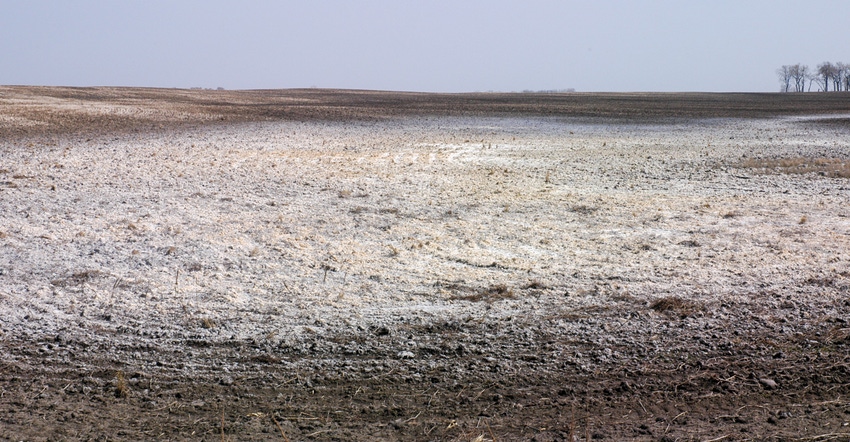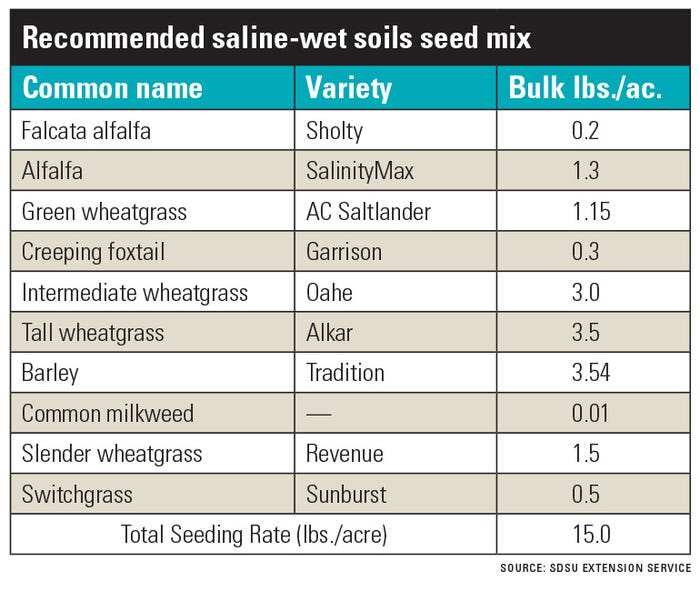May 21, 2020

It’s best to plant something on salty areas to keep them from getting even bigger. But what’s best to plant?
The South Dakota State University Extension Service, through its Every Acre Counts program, has developed perennial plant mixture suggestions suited for various types of marginal land situations, including saline, sodic and wet soil areas.
The key to turning around salty areas in fields begins with getting a living root established in the affected area, says Sarah Bauder, SDSU Extension agronomy field specialist.
Once established in or near the outside boundaries of a problem area, perennials slow water movement into the highly affected areas and prevent accumulation of more salts.
“This helps salt-tolerant, deep-rooted plant species slowly spread across the area, allowing the land to heal over time,” Bauder says. “With proper management, saline or alkali areas may once again grow a forage or field crop successfully, however long-term management changes may be required.”
Late fall planting
Generally, late fall is considered the most ideal time to plant forage type species into salty or wet soils. If a fall planting is not possible, winter dormant seeding can work as well if a snow-free period is available.
“Keep in mind, this type of conservation effort is not a fast process,” Bauder says. “While these perennial mixes may establish better than other plants in marginal areas, they still must acquire reasonable amounts of sunlight and moisture and may be slow to establish in some areas.
“Depending on the salinity levels in the soils, plants may develop at different rates and can oftentimes be less palatable during the first few growing seasons, as slower growth caused by salts could cause forages to be tougher and less palatable.”
There are many forage species that can adapt to salty areas, and to say that there is one specific mix that fits all circumstances would be impractical. However, mixture helps to spread the germination risk across species within the mix and is a well-adapted combination of salt tolerant species within South Dakota.

There are numerous recommended perennial plant species that may establish well on saline or sodic soils. For a full list and additional information on this topic, read the Natural Resources Conservation Service publication, “Plants for saline to sodic soil conditions.”
About Every Acre Counts
The purpose of Every Acre Counts is to improve the profitability, diversity and ecosystem benefits of agriculture by using precision technologies to empower producers to make informed management decisions for every acre of their operations.
Source: SDSU Extension Service, which is solely responsible for the information provided and is wholly owned by the source. Informa Business Media and all its subsidiaries are not responsible for any of the content contained in this information asset.
Read more about:
Saline SoilYou May Also Like




